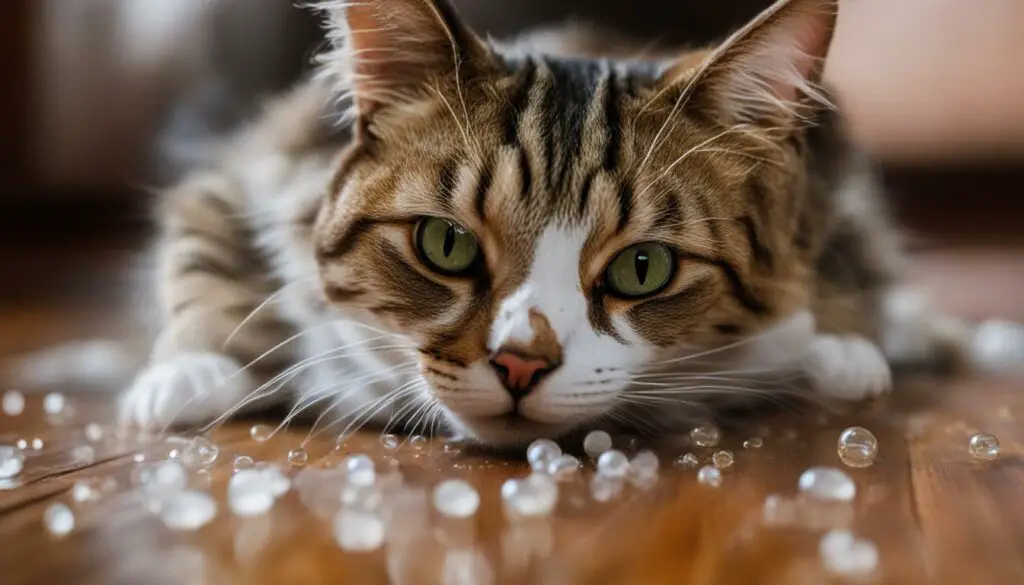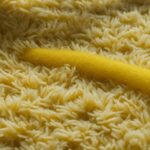As a cat owner, it can be concerning when your furry friend vomits clear liquid. While it may appear harmless, this symptom can actually indicate a more serious underlying issue. The clear liquid that your cat is throwing up originates from their digestive tract, and there are several potential causes for this behavior.
Vomiting in cats can be associated with a range of health concerns, including hairballs, internal obstructions, pancreatitis, eating too quickly, constipation, indigestion, parasitic infections, poisoning, stress, depression, or anxiety. To determine the cause of your cat’s vomiting, it’s important to consider any additional symptoms they may be experiencing. If your cat is repeatedly vomiting clear liquid and showing signs of distress or illness, it is crucial to seek veterinary attention.
Key Takeaways:
- Vomiting clear liquid in cats can indicate a serious underlying health issue.
- Potential causes of clear liquid vomit in cats include hairballs, dietary changes, indigestion, gastritis, and parasitic infections.
- More serious conditions, such as intestinal blockages, metabolic disorders, inflammatory bowel disease, pancreatitis, and cancer, can also lead to clear liquid vomit.
- Diagnosis and treatment for cat vomiting clear liquid may involve a physical examination, additional tests like blood work and X-rays, dietary changes, medication, or surgery.
- Preventive measures such as regular grooming, gradual diet transitions, and a stress-free environment can help reduce the risk of clear liquid vomit in cats.
Common Causes of Clear Liquid Vomit in Cats
When a cat vomits clear liquid, there can be several common causes behind this behavior. Understanding these causes can help cat owners identify the underlying issue and seek appropriate treatment. Some of the common causes of clear liquid vomit in cats include:
- Hairballs: Hairballs can irritate the digestive tract and trigger vomiting. Regular grooming and brushing can help minimize hair ingestion and reduce the likelihood of hairballs forming in the stomach.
- Dietary changes: Switching to a new food too quickly can cause digestive upset and lead to clear liquid vomit. Gradual diet transitions can minimize these issues.
- Indigestion and gastritis: Irregular feeding schedules or eating too quickly can result in indigestion and gastritis, leading to clear liquid vomit. Feeding smaller, more frequent meals and utilizing food puzzles can help slow down eating and prevent overeating.
- Parasitic infections: Parasitic infections can cause vomiting and other digestive issues in cats. Regular deworming and preventative measures can help reduce the risk of parasitic infections.
Treatment for cat vomiting clear liquid may involve addressing the underlying cause. Depending on the specific cause, treatment options can include dietary changes, medication, or even surgery in more severe cases. It is important for cat owners to consult with a veterinarian to determine the most appropriate treatment plan for their cat.
Regular grooming and brushing can help minimize hair ingestion and reduce the likelihood of hairballs forming in the stomach.
Comparison of Common Causes
| Cause | Symptoms | Treatment |
|---|---|---|
| Hairballs | Coughing, gagging, vomiting of hairballs | Regular brushing, hairball prevention diets |
| Dietary changes | Clear liquid vomiting, diarrhea, poor appetite | Gradual diet transitions, sensitive stomach diets |
| Indigestion and gastritis | Clear liquid vomiting, stomach discomfort | Feeding smaller, more frequent meals, anti-inflammatory medication |
| Parasitic infections | Vomiting, diarrhea, weight loss | Deworming medication, prevention measures |
By understanding the common causes of clear liquid vomit in cats, cat owners can take appropriate measures to prevent and address this issue. Regular grooming, gradual diet transitions, and maintaining a stress-free environment can go a long way in promoting the overall digestive health of cats.

Serious Causes of Clear Liquid Vomit in Cats
While many cases of clear liquid vomit in cats have benign causes, there are also more serious underlying conditions that can lead to this symptom. These may include intestinal blockages, metabolic disorders like diabetes or kidney disease, inflammatory bowel disease, pancreatitis, and even cancer. If your cat is vomiting clear liquid frequently and exhibits additional symptoms such as weight loss, lack of appetite, or lethargy, it is important to seek veterinary attention to rule out these more serious conditions. A thorough physical exam, as well as additional tests such as blood work and X-rays, may be necessary to determine the cause and appropriate treatment.
The Serious Causes of Clear Liquid Vomit in Cats:
| Cause | Description |
|---|---|
| Intestinal blockages | Obstruction in the digestive system leading to vomiting |
| Metabolic disorders | Conditions such as diabetes or kidney disease affecting organ function |
| Inflammatory bowel disease | Chronic inflammation of the digestive tract causing vomiting |
| Pancreatitis | Inflammation of the pancreas leading to vomiting and other symptoms |
| Cancer | Presence of tumors in the digestive system causing vomiting |
If your cat is exhibiting clear liquid vomit along with any of these serious symptoms, it is crucial to consult with your veterinarian for proper diagnosis and treatment. Early detection and intervention can significantly improve your cat’s prognosis and quality of life.
Diagnosis and Treatment for Cat Vomiting Clear Liquid
When your cat is vomiting clear liquid, it’s important to determine the underlying cause in order to provide appropriate diagnosis and treatment. A veterinarian will perform a physical examination and may recommend additional tests such as blood work and X-rays to identify any underlying health conditions. These diagnostic measures help rule out serious illnesses and provide valuable insights into the cause of the vomiting.
The specific treatment for cat vomiting clear liquid will depend on the diagnosed cause. For example, if the vomiting is due to hairballs, the veterinarian may recommend hairball prevention diets or remedies. In cases of dietary changes or indigestion, implementing a sensitive stomach diet or feeding smaller, more frequent meals may be advised. Medications can also be prescribed to address inflammation, parasites, or other underlying conditions.
In more severe cases, such as intestinal blockages or metabolic disorders, surgery or specialized treatments may be necessary. The veterinarian will discuss the available options and develop a treatment plan tailored to your cat’s specific needs. It’s important to follow the veterinarian’s instructions carefully and schedule any necessary follow-up appointments to monitor your cat’s progress.
| Common Causes | Diagnosis | Treatment |
|---|---|---|
| Hairballs | Physical examination Imaging (X-rays) Blood work |
Hairball prevention diets Regular grooming |
| Dietary changes | Physical examination Medical history review |
Gradual diet transitions Sensitive stomach diets |
| Indigestion | Physical examination Medical history review |
Feeding smaller, frequent meals Slowing down eating |
| Gastritis | Physical examination Medical history review Diagnostic tests |
Medications to reduce inflammation Dietary changes |
| Parasitic infections | Physical examination Diagnostic tests |
Parasite-specific medications Preventive measures |
Remember, it’s always important to consult with a veterinarian for a proper diagnosis and treatment plan tailored to your cat’s specific needs. Your veterinarian will guide you through the process and provide the necessary support for your cat’s digestive health.
Preventive Measures for Clear Liquid Vomit in Cats
Preventing clear liquid vomit in cats can help keep your feline friend healthy and happy. Here are some tips to minimize the risk of vomiting in cats:
- Groom regularly: Regular grooming and brushing can help reduce the amount of loose fur ingested during self-grooming, ultimately preventing hairballs and vomiting.
- Gradual dietary changes: When introducing a new food to your cat’s diet, do it slowly and gradually to minimize digestive upset. A sudden change in diet can lead to vomiting.
- Feed smaller, frequent meals: Dividing your cat’s meals into smaller, more frequent portions can prevent overeating and indigestion, which can contribute to vomiting.
- Utilize food puzzles: Food puzzles or interactive feeders can slow down your cat’s eating pace, making them less likely to vomit due to eating too quickly.
- Create a stress-free environment: Cats can vomit due to stress or anxiety. Providing a calm and stimulating environment with plenty of hiding spots and vertical spaces can help reduce stress levels in your cat.
By implementing these preventive measures, you can significantly reduce the chances of your cat experiencing clear liquid vomiting. However, if you have any concerns or questions about your cat’s diet or behaviors, it is always best to consult with your veterinarian for personalized recommendations.

Table: Comparison of Preventive Measures for Clear Liquid Vomit in Cats
| Preventive Measures | Effectiveness | Implementation Difficulty |
|---|---|---|
| Groom regularly | High | Low |
| Gradual dietary changes | Moderate | Medium |
| Feed smaller, frequent meals | High | Low |
| Utilize food puzzles | Moderate | Medium |
| Create a stress-free environment | High | Medium |
“Implementing preventive measures such as regular grooming, gradual dietary changes, and creating a stress-free environment can significantly reduce the risk of clear liquid vomit in cats.” – Dr. Smith, Veterinary Specialist
When to Seek Veterinary Care for Vomiting Cats
If your cat is vomiting, it’s important to know when to seek veterinary care. While occasional vomiting may not be a cause for immediate concern, there are situations where it’s best to consult a veterinarian. Here are some signs that indicate you should seek veterinary care for your vomiting cat:
- If your cat vomits more than once a week
- If your cat shows additional symptoms such as weight loss or lack of appetite
- If the vomiting persists for a few weeks
- If your cat vomits each time they eat or drink
- If your cat shows signs of distress
In addition, it’s important to monitor the color of the vomit. If you notice the presence of blood or green liquid in the vomit, it may indicate a more serious problem and immediate veterinary care should be sought.
When in doubt, it’s always better to err on the side of caution and consult with a veterinarian. They can assess your cat’s condition, perform necessary tests, and provide appropriate treatment or guidance based on the underlying cause of the vomiting.
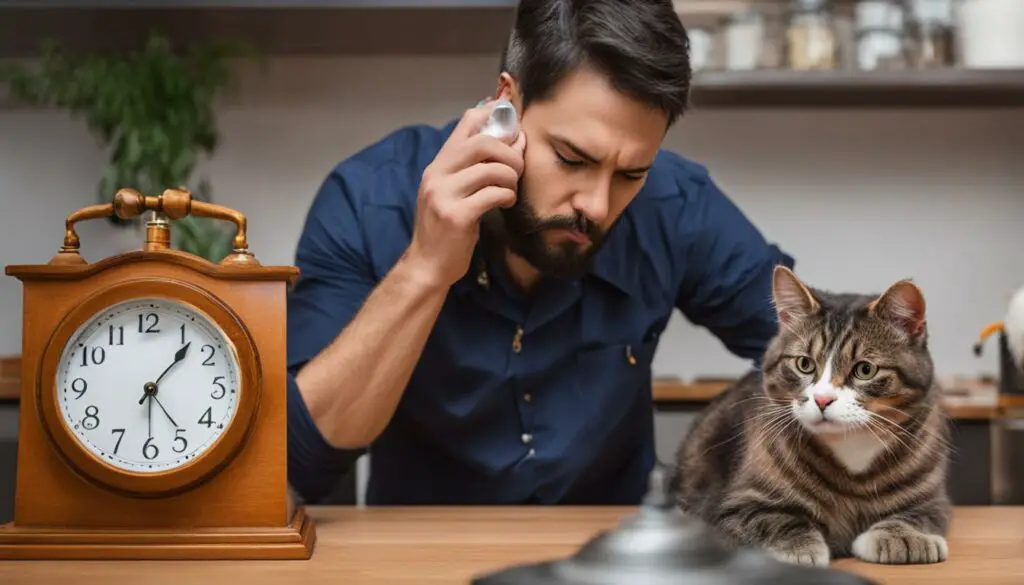
| Symptoms of Serious Vomiting | When to Seek Veterinary Care |
|---|---|
| More than once a week | Consult a veterinarian |
| Additional symptoms such as weight loss or lack of appetite | Consult a veterinarian |
| Persisting for a few weeks | Consult a veterinarian |
| Vomiting each time they eat or drink | Seek immediate veterinary care |
| Show signs of distress | Seek immediate veterinary care |
Veterinary Examination for Vomiting Cats
When a cat is vomiting clear liquid, a veterinary examination is crucial to determine the underlying cause and provide appropriate treatment. The examination will typically involve a comprehensive physical examination, which includes checking vital signs and palpating the abdomen for any abnormalities. The veterinarian may also recommend additional diagnostic tests, such as blood work and X-rays, to assess organ function and rule out any serious conditions.
During the physical examination, the veterinarian will carefully evaluate the cat’s overall health and look for any signs of distress or discomfort. They will also assess the cat’s hydration status and check for any abnormalities in the abdomen that could be causing the vomiting.
The additional diagnostic tests, such as blood work and X-rays, can provide valuable information about the cat’s organ function and help identify any underlying conditions. Blood work can reveal any imbalances in liver and kidney function, red blood cell levels, and platelet levels. X-rays can help detect potential blockages or fluid in the abdomen that may be contributing to the vomiting.
Vet Tests for Cat Vomiting:
| Diagnostic Test | Purpose |
|---|---|
| Blood work | Assess organ function and detect imbalances |
| X-rays | Detect potential blockages or fluid in the abdomen |
| Specialized gastrointestinal function tests | Evaluate digestive system function |
| Abdominal ultrasound | Further evaluate the digestive system |
Based on the findings from the veterinary examination and diagnostic tests, the veterinarian will recommend an appropriate treatment plan. Treatment may involve dietary changes, medication, or surgery, depending on the underlying cause of the vomiting. It’s important to follow the veterinarian’s instructions and continue any prescribed treatments to ensure the cat’s recovery and prevent future episodes of vomiting.
In conclusion, a veterinary examination is essential for cats experiencing clear liquid vomit. It allows for a thorough evaluation of the cat’s health, the identification of any underlying conditions, and the development of an appropriate treatment plan. By seeking prompt veterinary care and following the recommended treatment, cat owners can help their furry friends recover and maintain good digestive health.
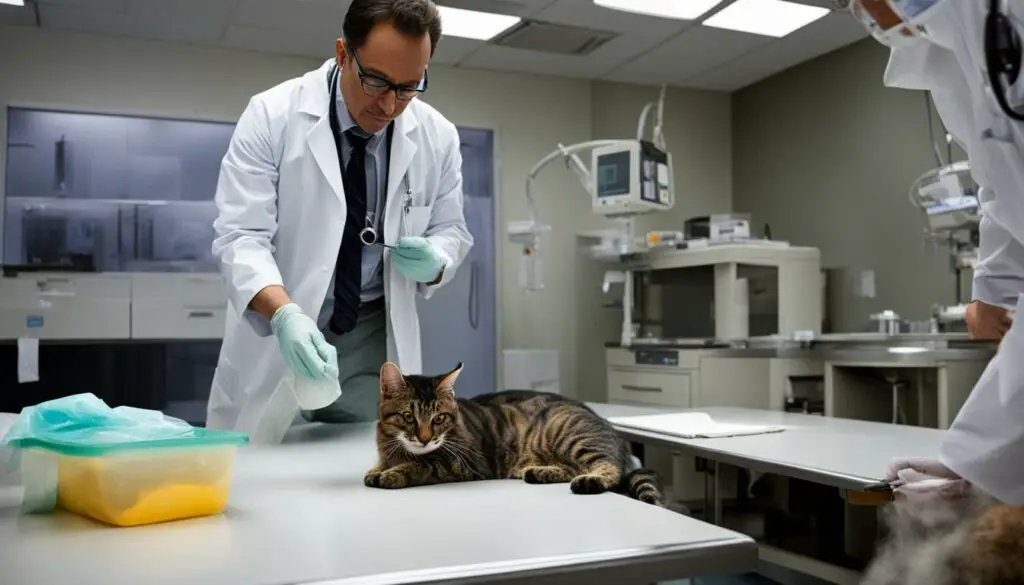
Emergency Situations for Vomiting Cats
When it comes to cat vomiting, some situations require immediate veterinary care. Recognizing these emergency situations is crucial for the well-being of your cat. If your cat is attempting to vomit but unable to do so, it may indicate the presence of a foreign object causing a blockage. This can be dangerous and requires immediate attention. Additionally, if you notice blood in your cat’s vomit, severe or persistent vomiting, or if your cat appears extremely lethargic and dehydrated, it is essential to seek veterinary care as soon as possible.
Remember, prompt intervention can make a significant difference in the outcome for cats experiencing these emergencies. Don’t hesitate to contact a veterinarian or an emergency animal hospital for guidance and treatment.
In these emergency situations, a veterinarian can perform a thorough examination, including diagnostic tests to determine the cause of the vomiting and provide appropriate treatment. Immediate care can help identify and address any underlying issues, such as intestinal blockages or metabolic disorders. The sooner these conditions are diagnosed and treated, the better the chances of a positive outcome for your cat.
Emergency Situations for Vomiting Cats
To recap, emergency situations for vomiting cats include:
- Cat attempting to vomit but unable to do so
- Blood in vomit
- Severe or persistent vomiting
- Extreme lethargy and dehydration
If you observe any of these symptoms in your cat, it is crucial to seek immediate veterinary care to ensure the best possible outcome for your furry friend.
| Emergency Situations for Vomiting Cats | When to Seek Immediate Veterinary Care |
|---|---|
| Cat attempting to vomit but unable to do so | Seek immediate veterinary care |
| Blood in vomit | Seek immediate veterinary care |
| Severe or persistent vomiting | Seek immediate veterinary care |
| Extreme lethargy and dehydration | Seek immediate veterinary care |
Remember, your cat’s well-being is of utmost importance, and seeking immediate veterinary care in these emergency situations can help ensure they receive the necessary treatment and support.
Providing Supportive Care for Vomiting Cats
If your cat is experiencing occasional vomiting of clear liquid and has been evaluated by a veterinarian, there are some supportive measures you can take to help them. First and foremost, provide a calm and stress-free environment for your feline friend. Stress can contribute to vomiting, so it’s important to create a peaceful space where they feel safe and secure.
Ensuring that your cat has access to fresh water is essential to prevent dehydration, especially if they have been vomiting. Encourage them to drink by providing clean water in a location that is easily accessible to them. If your cat is not drinking enough, you can try using a pet water fountain, which may help entice them to drink more.
Feeding smaller, frequent meals can also be beneficial for cats who vomit clear liquid. This approach can help prevent overeating and slow down the digestion process. If your veterinarian has recommended any dietary changes or medications for your cat, be sure to follow their instructions carefully to provide the necessary support for their digestive health.
“Creating a calm and stress-free environment, providing access to fresh water, and feeding smaller, frequent meals can help support cats experiencing occasional vomiting of clear liquid.”
Remember, if your cat’s vomiting persists or becomes more frequent, it’s important to consult with your veterinarian for further guidance. They can help determine the underlying cause of the vomiting and recommend appropriate treatment options. By providing supportive care and following your vet’s advice, you can help your cat feel better and promote their overall well-being.
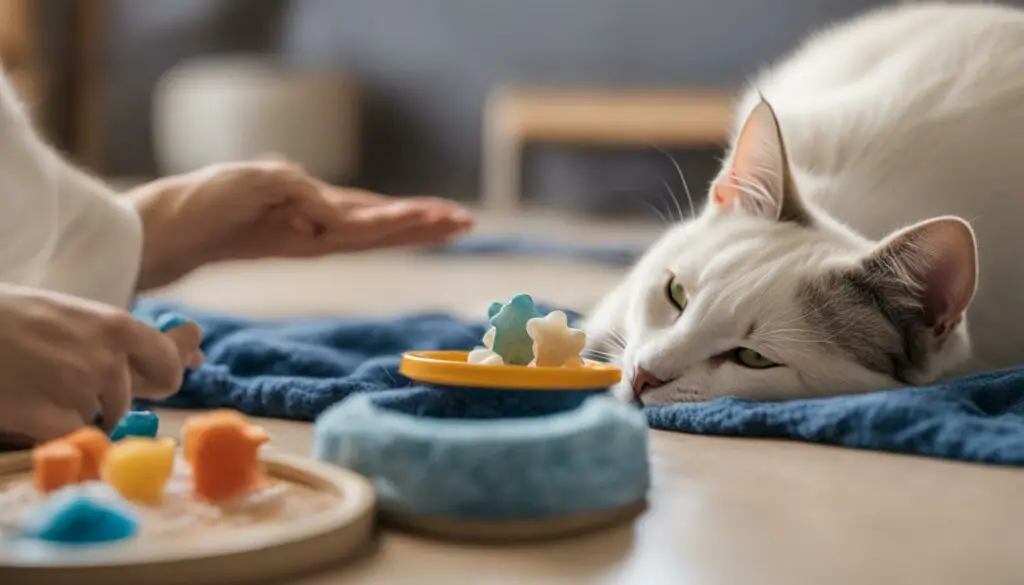
Table: Tips for Providing Supportive Care for Cats Vomiting Clear Liquid
| Supportive Care Tips | Description |
|---|---|
| Provide a calm and stress-free environment | Create a peaceful space where your cat feels safe and secure to minimize stress-induced vomiting. |
| Ensure access to fresh water | Offer clean water in a location that is easily accessible to encourage your cat to stay hydrated. |
| Feed smaller, frequent meals | Prevent overeating and slow down digestion by providing smaller, more frequent meals throughout the day. |
| Follow veterinary recommendations | Adhere to any dietary changes or medication instructions provided by your veterinarian for optimal support. |
Regular Veterinary Check-ups for Cats
Regular veterinary check-ups are essential for maintaining the health and well-being of your cat. Just like humans, cats can benefit from routine health examinations to detect any potential issues early on and ensure they receive the necessary care and support for a long and healthy life.
During a regular check-up, your veterinarian will perform a thorough physical examination, assess vital signs, and check for any abnormalities. They may also recommend diagnostic tests such as blood work and X-rays to evaluate organ function and detect any underlying conditions that may not be immediately apparent.
These check-ups not only help prevent and manage any medical issues but also provide an opportunity to discuss any concerns or questions you may have about your cat’s health. Your veterinarian can offer guidance on nutrition, preventive care, vaccinations, and address any behavioral or lifestyle-related concerns.
| Benefits of Regular Veterinary Check-ups for Cats | Frequency |
|---|---|
| Early detection of potential health issues | At least once a year for adult cats |
| Preventive care measures, such as vaccinations and parasite control | Bi-annual check-ups for senior cats and cats with chronic conditions |
| Monitoring organ function and overall well-being | More frequent check-ups for kittens and young cats |
| Guidance on nutrition, behavior, and lifestyle-related concerns | As recommended by your veterinarian |
Regular veterinary check-ups are an essential part of responsible cat ownership. By staying proactive and scheduling routine visits, you can ensure that your cat receives the necessary preventive care, early detection of potential health issues, and personalized guidance for a happy and healthy life.
The Role of Diet in Cat Health
When it comes to maintaining the health of your cat, diet plays a crucial role. Providing a balanced and nutritionally complete diet is essential for their overall well-being, including their gastrointestinal health. A proper diet ensures that your cat receives the necessary nutrients to support their bodily functions and promotes a healthy digestive system.
Feeding your cat a diet that meets their specific nutritional needs is important. Factors such as age, activity level, and any underlying health conditions should be taken into consideration when selecting the right diet. Consulting with your veterinarian can help you determine the best food for your cat and address any dietary concerns or restrictions they may have.
It’s vital to follow feeding guidelines and make any dietary changes gradually to minimize gastrointestinal upset. Sudden changes in diet can lead to digestive issues, including vomiting. Introduce new foods slowly and monitor your cat’s response to ensure a smooth transition. Additionally, providing fresh water and appropriate portion sizes are essential for promoting good digestion and preventing dehydration.
A well-balanced diet not only supports your cat’s digestive health but also contributes to their overall vitality and longevity. It helps maintain a healthy weight, strengthens the immune system, and promotes healthy skin and coat. Proper nutrition is the foundation of your cat’s well-being, so make sure to prioritize their dietary needs for a happy and healthy feline companion.
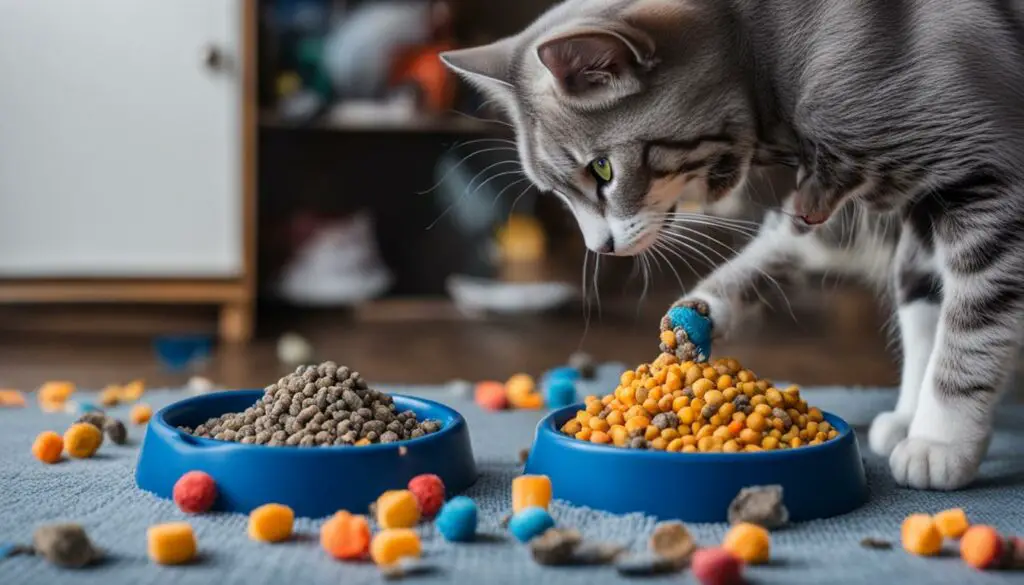
Promoting a Stress-Free Environment for Cats
Cats are highly sensitive creatures that thrive in a calm and stress-free environment. As a cat owner, it is essential to create a safe and secure space for your feline friend where they can retreat and feel at ease. One way to achieve this is by providing them with a designated area or room in your home that is quiet and free from loud noises or disturbances. This space should be equipped with comfortable bedding, toys, scratching posts, and vertical spaces for climbing and perching.

Additionally, maintaining a consistent and predictable daily routine can help reduce anxiety and stress in cats. Cats thrive on routine and feel more secure when they know what to expect. Set regular feeding times and play sessions, and try to keep other daily activities, such as cleaning the litter box or administering medication, consistent as well.
Another important aspect of creating a stress-free environment for your cat is minimizing any potential sources of stress. This can include avoiding sudden changes in their environment or routine, such as moving furniture or introducing new pets or family members. If changes are inevitable, try to make them gradually and provide your cat with plenty of time to adjust.
Creating a Stress-Free Zone
To further promote a stress-free environment, it is essential to ensure that your cat has access to essential resources without competition or conflict. This means providing multiple litter boxes in different areas of the house if you have multiple cats, as well as having separate food and water dishes for each cat. By eliminating competition for essential resources, you can reduce stress and potential conflicts between your cats.
In conclusion, a stress-free environment is essential for the overall well-being of your cat. By creating a safe and peaceful space, maintaining a consistent routine, and minimizing sources of stress, you can help your cat lead a happy and healthy life. Remember, each cat is unique, and it’s essential to observe and understand your cat’s individual needs to create a stress-free environment tailored specifically for them.
Cats and Hairballs: Prevention and Treatment
Cats are known for their meticulous grooming habits, but this self-care ritual can sometimes lead to the formation of hairballs. Hairballs occur when cats ingest loose fur during grooming, which then accumulates in their digestive tract. These hairballs can cause discomfort and may even lead to vomiting. However, there are measures cat owners can take to prevent and treat hairballs in their feline friends.
Preventing Hairballs
Regular grooming is essential in preventing hairballs in cats. By brushing your cat regularly, you can remove loose fur from their coat and minimize the amount they ingest while grooming themselves. This is especially important for long-haired breeds. Additionally, providing your cat with a balanced and nutritious diet can promote healthy digestion and reduce the formation of hairballs. There are also specialized cat foods and treats available that are formulated to help prevent hairball formation.
Treating Hairballs
If your cat already has a hairball, there are several options for treatment. One method is to use hairball remedies, which are often available as a gel or paste. These remedies help lubricate the digestive tract, allowing the hairball to pass more easily. Another approach is to incorporate dietary supplements into your cat’s routine that promote healthy digestion and aid in the elimination of hairballs. If your cat is experiencing frequent or severe hairballs, it is advisable to consult with your veterinarian for additional guidance and potentially explore other treatment options.
| Treatment Options | Description |
|---|---|
| Hairball Remedies | Gels or pastes that lubricate the digestive tract, facilitating the passage of hairballs. |
| Dietary Supplements | Supplements that promote healthy digestion and aid in the elimination of hairballs. |
| Veterinary Intervention | In severe cases, a veterinarian may recommend additional treatments or procedures to remove hairballs or address underlying issues. |
It’s important to note that while occasional hairballs are normal for cats, frequent or persistent hairballs could indicate an underlying issue. If your cat is vomiting excessively, experiencing digestive issues, or showing signs of distress, it is recommended to seek veterinary attention. A thorough examination by a veterinarian can help determine the cause of the hairballs and ensure your cat receives the appropriate treatment.

Conclusion
Understanding why your cat threw up clear liquid is crucial for maintaining their overall health and well-being. Clear liquid vomit in cats can be caused by a variety of factors, ranging from benign issues like hairballs and dietary changes to more serious conditions such as gastrointestinal obstructions and metabolic disorders.
If your cat is experiencing frequent vomiting or if the vomiting is accompanied by other concerning symptoms, it is important to seek veterinary care. A thorough examination and diagnostic tests can help identify the underlying cause and determine the appropriate treatment. By addressing the root cause of the vomiting, you can improve your cat’s digestive health and alleviate their discomfort.
Additionally, maintaining a balanced diet tailored to your cat’s specific nutritional needs, providing a stress-free environment, and scheduling regular check-ups with your veterinarian are essential for promoting cat health and preventing digestive issues. By taking proactive measures and staying attentive to your cat’s well-being, you can ensure they live a long and healthy life.
In conclusion, cat vomiting clear liquid should never be ignored. Seek veterinary care if necessary, follow recommended treatments, and prioritize your cat’s overall health and feline digestive health. By doing so, you can help your cat feel their best and minimize the occurrence of vomiting episodes.
FAQ
Why did my cat throw up clear liquid?
There are several reasons why your cat might vomit clear liquid, including hairballs, dietary changes, indigestion, gastritis, and parasitic infections. It could also be a sign of a more serious underlying condition. It is important to monitor your cat for any additional symptoms and consult with a veterinarian if the vomiting persists or is accompanied by other signs of distress or illness.
How can I prevent my cat from vomiting clear liquid?
There are preventive measures you can take to reduce the risk of clear liquid vomit in cats. Regular grooming and brushing can help prevent hairballs. Gradual diet transitions and feeding smaller, more frequent meals can minimize digestive upset. Providing a stress-free environment and enrichment for your cat can also help prevent anxiety-related vomiting. Consulting with your veterinarian for personalized recommendations on diet and lifestyle changes is advised.
When should I seek veterinary care for my cat’s vomiting?
If your cat vomits more than once a week, shows additional symptoms such as weight loss or lack of appetite, or if the vomiting persists for a few weeks, it is recommended to make an appointment with your veterinarian. Cats that vomit each time they eat or drink, or show signs of distress, should be seen immediately. Additionally, if the vomit contains blood or green liquid, it may indicate a more serious problem and veterinary attention should be sought.
How will my veterinarian diagnose and treat my cat’s vomiting?
A veterinarian will perform a physical examination and may recommend additional tests such as blood work and X-rays to determine the underlying cause of the vomiting. The specific treatment will depend on the identified cause and may involve dietary changes, medication, or even surgery in severe cases. Your veterinarian will provide personalized recommendations based on their findings and the needs of your cat.
What can I do to help my cat if they are vomiting clear liquid occasionally?
If your cat is experiencing occasional vomiting of clear liquid and has been evaluated by a veterinarian, you can provide supportive care by ensuring a calm and stress-free environment, offering fresh water to prevent dehydration, and feeding smaller, frequent meals. It is important to follow any dietary changes or medication instructions provided by your vet.
How often should I take my cat for regular veterinary check-ups?
Regular veterinary check-ups are important for maintaining your cat’s overall health. It is recommended to schedule annual or biannual visits for vaccinations, thorough physical exams, and monitoring of organ function through blood work. Regular check-ups can help detect potential issues early on and ensure your cat receives the necessary care for a long and healthy life.
What role does diet play in my cat’s health?
Diet plays a crucial role in maintaining cat health, including gastrointestinal health. Feeding a balanced and nutritionally complete diet that meets your cat’s specific nutritional needs is essential. Consult with your veterinarian to determine the best diet for your cat, considering factors such as age, activity level, and any underlying health conditions. Following feeding guidelines and making dietary changes gradually can help promote good digestion and prevent issues like vomiting.
How can I promote a stress-free environment for my cat?
Cats thrive in a calm and stress-free environment. Provide them with a designated safe space, enrich their environment with toys and vertical spaces, and maintain a consistent routine to minimize anxiety-inducing changes. If you have multiple cats, ensure there are enough resources to prevent competition. Creating a stress-free environment can help reduce the likelihood of vomiting and other health issues.
What can I do to prevent hairballs in my cat?
Regular grooming and brushing can help minimize hair ingestion and reduce the chances of hairballs forming in the stomach. There are also commercial cat diets and treats formulated to help prevent hairball formation. Introducing regular brushing sessions with your cat can help remove loose hair, and if hairballs become a chronic issue, consult with your veterinarian for additional guidance and potential treatment options.
Source Links
- https://be.chewy.com/why-is-my-cat-throwing-up-clear-liquid/
- http://www.riverlandingsanimalclinic.com/news/possible-causes-for-your-cat-vomiting-clear-liquid
- https://www.thesprucepets.com/cat-vomiting-clear-liquid-4777783

